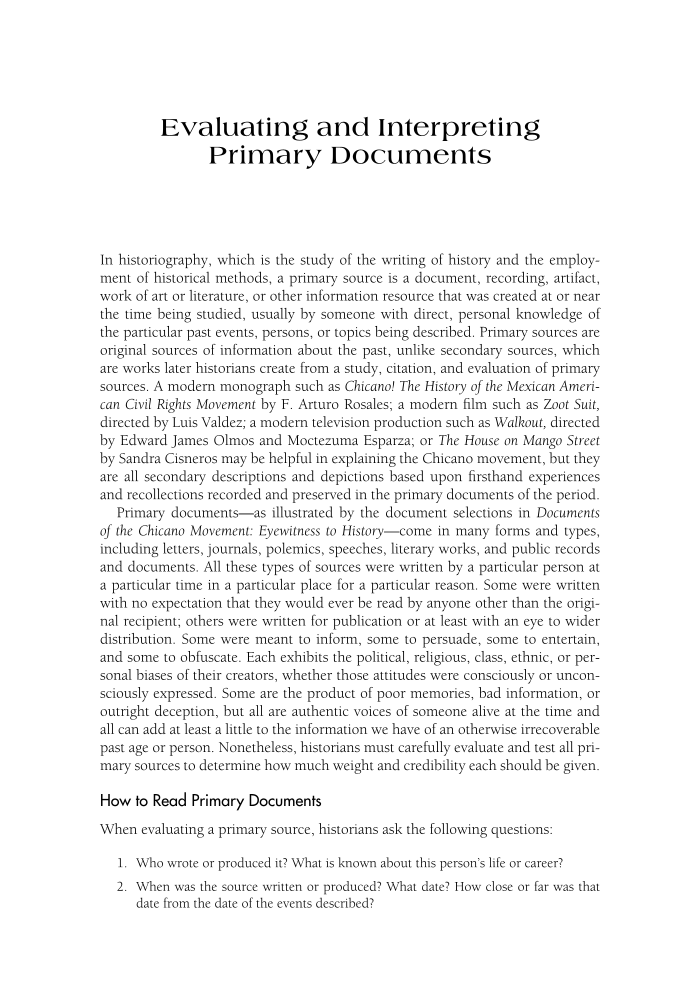Evaluating and Interpreting Primary Documents In historiography, which is the study of the writing of history and the employ- ment of historical methods, a primary source is a document, recording, artifact, work of art or literature, or other information resource that was created at or near the time being studied, usually by someone with direct, personal knowledge of the particular past events, persons, or topics being described. Primary sources are original sources of information about the past, unlike secondary sources, which are works later historians create from a study, citation, and evaluation of primary sources. A modern monograph such as Chicano! The History of the Mexican Ameri- can Civil Rights Movement by F. Arturo Rosales a modern fi lm such as Z oot Suit, directed by Luis Valdez a modern television production such as Walkout, directed by Edward James Olmos and Moctezuma Esparza or The House on Mango Street by Sandra Cisneros may be helpful in explaining the Chicano movement, but they are all secondary descriptions and depictions based upon fi rsthand experiences and recollections recorded and preserved in the primary documents of the period. Primary documents—as illustrated by the document selections in Documents of the Chicano Movement: Eyewitness to History —come in many forms and types, including letters, journals, polemics, speeches, literary works, and public records and documents. All these types of sources were written by a particular person at a particular time in a particular place for a particular reason. Some were written with no expectation that they would ever be read by anyone other than the origi- nal recipient others were written for publication or at least with an eye to wider distribution. Some were meant to inform, some to persuade, some to entertain, and some to obfuscate. Each exhibits the political, religious, class, ethnic, or per- sonal biases of their creators, whether those attitudes were consciously or uncon- sciously expressed. Some are the product of poor memories, bad information, or outright deception, but all are authentic voices of someone alive at the time and all can add at least a little to the information we have of an otherwise irrecoverable past age or person. Nonetheless, historians must carefully evaluate and test all pri- mary sources to determine how much weight and credibility each should be given. How to Read Primary Documents When evaluating a primary source, historians ask the following questions: 1. Who wrote or produced it? What is known about this person’s life or career? 2. When was the source written or produced? What date? How close or far was that date from the date of the events described?
Document Details My Account Print multiple pages
Print
You have printed 0 times in the last 24 hours.
Your print count will reset on at .
You may print 0 more time(s) before then.
You may print a maximum of 0 pages at a time.












































































































































































































































































































